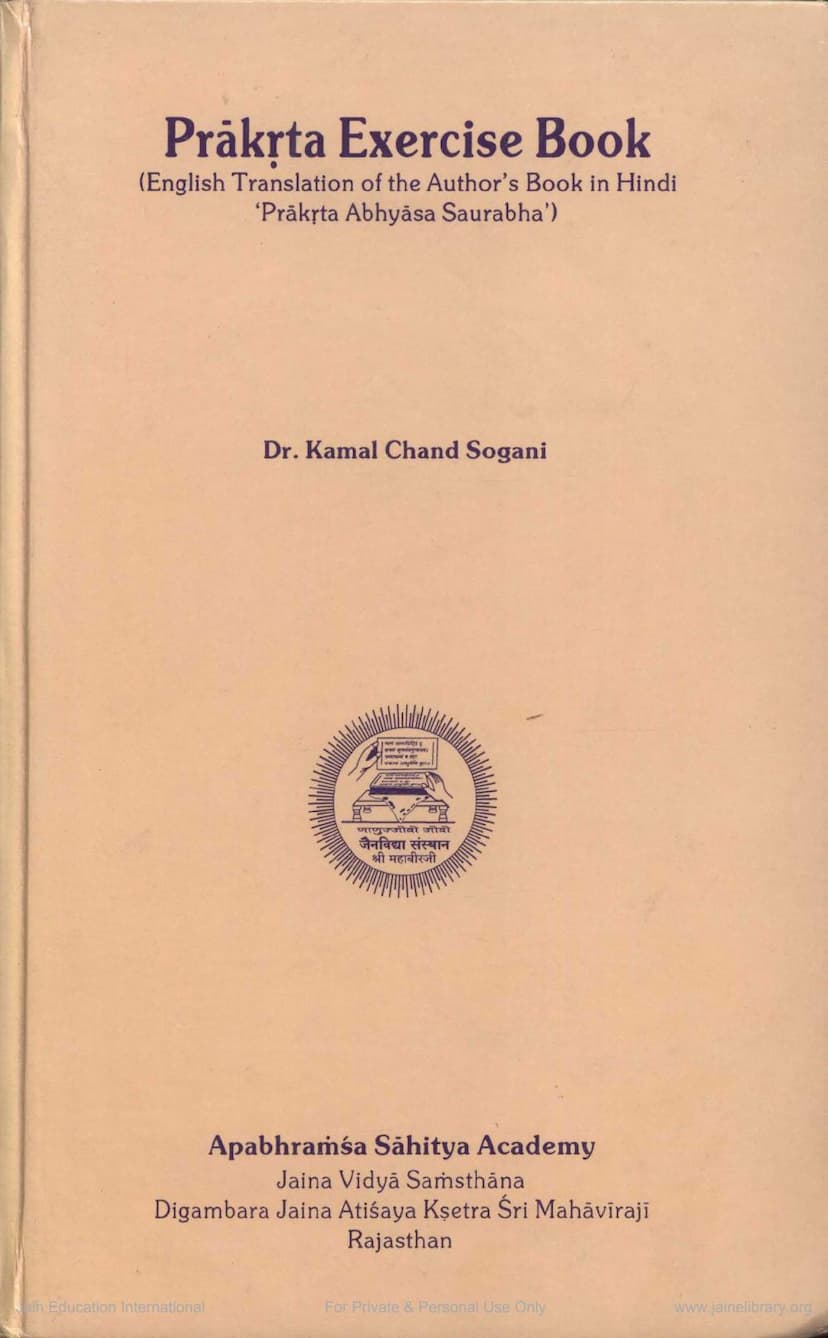Prakrit Exercise Book
Added to library: September 2, 2025
Loading image...

Summary
This document is the Prakrta Exercise Book, an English translation of Dr. Kamal Chand Sogani's Hindi book "Prākṛta Abhyāsa Saurabha." Published by Apabhraṁsa Sahitya Academy, it serves as a practical guide for learning the Prakrta language.
Here's a breakdown of its content and purpose:
- Purpose: The book is designed to help students learn Prakrta through exercises. It aims to provide a structured approach to understanding Prakrta grammar and composition, suitable for those who know English.
- Content Structure: The book is organized into numerous exercises, each focusing on specific grammatical concepts. The table of contents (Page #4-8) reveals a systematic progression through various aspects of Prakrta, including:
- Tenses: Present, Past, Future, and Imperative.
- Verbs: Transitive and Intransitive, including Past Participles (Active and Impersonal forms), Present Participles, and Obligatory/Potential Participles.
- Nouns and Pronouns: Covering different noun endings (a-, i-, ā-, u-, ū-), genders (Masculine, Feminine, Neuter), numbers (Singular, Plural), and cases (Nominative, Accusative, Instrumental, Dative, Ablative, Genitive, Locative, Vocative).
- Parts of Speech: Special attention is given to Absolutives and Infinitives.
- Specific Grammatical Features: Causative suffixes, retainers of innate meaning suffixes (Svarthika), different pronouns, indeclinables, irregular verbs, and irregular passive voice forms.
- Advanced Topics: Abbreviations and methods for grammatical analysis, a Prakrta story with an English translation, and grammatical analysis of that story.
- Methodology: Each exercise typically involves:
- Translation: Translating sentences from English to Prakrta, often requiring the use of all possible alternatives for inflected personal pronouns and verbal forms.
- Rule Application: Translating sentences based on specific rules provided in footnotes, which refer to lessons in a companion "Prakrta Grammar and Composition" book.
- Inflection Practice: Writing inflected forms of personal pronouns or nouns in agreement with given verbal forms or vice-versa.
- Form Identification: Identifying the person, number, original verb, suffixes, case, gender, and tense of given Prakrta words.
- Sentence Construction: Creating sentences using specific grammatical forms like participles, infinitives, or absolutives.
- Correction: Identifying and correcting grammatical errors in given Prakrta sentences.
- Key Features:
- Comprehensive Coverage: It appears to cover a wide range of Prakrta grammatical structures, from basic tenses to more complex verb forms and noun declensions.
- Practice-Oriented: The book heavily relies on exercises to reinforce learning.
- Translation Focus: The core of many exercises involves translating between English and Prakrta.
- Reference to Companion Book: Exercises often direct students to study specific lessons in "Prakrta Grammar and Composition" for rules and explanations, suggesting a pedagogical approach where this exercise book complements a theoretical text.
- Diacritical Marks: Page #10 provides a key to diacritical marks used in the transliteration of Prakrta, which is crucial for accurate pronunciation and understanding.
- Dedication: The book is dedicated to Dr. A.N. Upadhye and Dr. Hiralal Jain, recognizing their contributions to Jain and Prakrta studies.
- Publisher Information: The Apabhraṁsa Sahitya Academy, established by the Digambara Jaina Atiśaya Kshetra, Śri Mahāviraji, is the publisher, highlighting its role in promoting Prakrta and Apabhraṁsa languages.
In essence, the Prakrta Exercise Book is a practical workbook designed to equip learners with the skills to actively use and understand the Prakrta language through a systematic progression of exercises covering its grammar, vocabulary, and sentence construction.